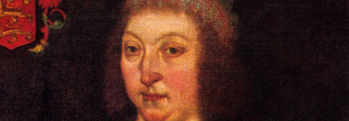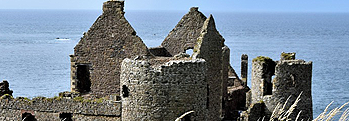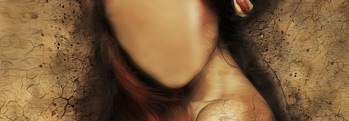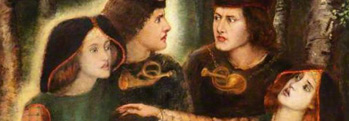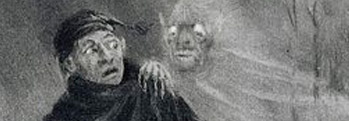Stingy Jack and His Lantern
Irish and Celtic myths and legends, Irish folklore and Irish fairy tales and Irish Ghost Stories
Some people are too smart for their own good
 Every year around Halloween, people carve pumpkins or turnips into faces and put candles inside them, but not many know that this custom came from Ireland originally, or the story behind it!
Every year around Halloween, people carve pumpkins or turnips into faces and put candles inside them, but not many know that this custom came from Ireland originally, or the story behind it!
They say there was a blacksmith many years gone who was fond of his drink, and a mean drunk he was too, and tight with it. Not many friends did stingy Jack have, sober or otherwise, and he loved to play practical jokes on people.
Well, before too long his fame reached the devil himself, and old Nick clambered up out of his hole to have a chat with Jack. This didn't faze Jack in the slightest, and he ran up a mighty tab drinking with the evil one. But then the night was done and it was time to go, and the devil declared that Jack should pay the bill!
But Jack was a crafty old fellow, and said he'd barter his soul for the coin to cover the night's festivities. The devil readily agreed, and turned himself into a coin, but Jack slipped it into his pocket alongside a silver crucifix, before slipping out the back window. So caught in close quarters with the sign of his enemy and eventual demise, the devil had nowhere to go but down, and down he went.
Fuming at this trickery, the devil came back the very next night and demanded Jack's soul! Jack agreed, but asked if he could have but a taste of a sweet apple from the top of a tree before he went to his judgement, and up the devil went.
Quick as a flash Jack had carved crosses into every side of the tree and so blocked the devil form coming down until he swore to leave Jack be to live his mortal life, and so it was agreed.
Upon his death, Jack went to the gates of Heaven, but he was told there was no place for such a mean and uncharitable fellow, as lacking in virtue as he was. So he turned around and went down the wide and winding gloomy steps to hell, where the devil laughed and not only refused to let him in, but hurled an ember from the fires at him!
It lodged in his head and now his phantom walks the earth mournfully forever more with the light of hell burning from his empty eye sockets.
However and on an even more sinister note, other stories suggest that the carving of turnips into heads was based on a much older Gaelic custom!
Those parts of Irelands, Scotland and England where the Samhain lantern tradition was practiced are places where the Gaels once held sway, and where Gaelic culture wasn't completed subsumed by subsequent invaders. In that Gaelic culture, the taking of heads as trophies was the norm!
Diodorus Siculus of Greece wrote about the Celts in the first century:
"They cut off the heads of enemies slain in battle and attach them to the necks of their horses. The blood-stained spoils they hand over to their attendants and striking up a paean and singing a song of victory; and they nail up these first fruits upon their houses, just as do those who lay low wild animals in certain kinds of hunting. They embalm in cedar oil the heads of the most distinguished enemies, and preserve them carefully in a chest, and display them with pride to strangers, saying that for this head one of their ancestors, or his father, or the man himself, refused the offer of a large sum of money. They say that some of them boast that they refused the weight of the head in gold…"
Another Greek called Strabo claims:
"There is also that custom, barbarous and exotic, which attends most of the northern tribes… when they depart from the battle they hang the heads of their enemies from the necks of their horses, and when they have brought them home, nail the spectacle to the entrance of their houses."
It is believed that the Celts thought the soul or life spark was seated in the head, and by taking a head, they could claim the soul within as well. Legends say that many heads kept talking long after separation from their bodies, by druid magic!
And of course there is the translation of the ancient and dreaded Gaelic god Crom Cruach, old black stoop of the many glooms, whose name means "the bloody head"...
Jack may well have walked the road below!
More Irish Ghost Stories
There once was a woman called Máire Rua, or Red Mary, since she was one of the McMahons and had hair like a fiery sunset with a temper to match! Many legends have grown up around this seventeenth century force of nature, some true, some maybe less so, and some she spread herself! She made her seat in Leamanagh Castle, in the Burren in Cou ... [more]
If Dublin is the capital city of Ireland, County Clare is its dark reflection on the other side of the country, a place where many of the shadowy tales and unsolved mysteries of bygone years eventually seem to flow. Layer upon layer of centuries burden its rocky hills, left behind by the passage of numberless and nameless peoples, each hiding their ... [more]
Little remains now of once-proud Dunluce castle, whose halls had echoed with the sounds of laughter and music, and whose vaulted arches had defied the most ferocious storms. Only echoes and shadows are left behind, and some say, the tormented ghost of a young lady waiting for her love to return! The castle had originally been built by Richard &O ... [more]
The tale of Kilmagoura in County Cork is, for the most part, a peaceful and quiet one, as it lay under the power of the Fitzgeralds for many years, and they were, for the most part, just and fair rulers. So good were they that nobody had anything bad to say about them, and tales were told of their heroism and generosity. But as they say, it is t ... [more]
The long shadow of Leap Castle in County Offaly stretches across many centuries, and from its dark depths echo tales of terror, murder and the dread hand of the supernatural reaching from beyond the grave! The land upon which the O'Bannon clan built Leap Castle in the thirteenth century was not unoccupied – in fact, it had been used by ... [more]
Once upon a time in Tyrone there were two little children, the son and daughter of parents who had died when they were little. They missed their parents very much, but they were raised by a guardian who was a fanatical atheist, and was determined to convert the children to his beliefs. But they would have none of it, and so they made a childhood ... [more]
Every year around Halloween, people carve pumpkins or turnips into faces and put candles inside them, but not many know that this custom came from Ireland originally, or the story behind it! They say there was a blacksmith many years gone who was fond of his drink, and a mean drunk he was too, and tight with it. Not many friends did stingy Jack ... [more]
There was a famous beauty who lived in Belvelly castle overlooking Cork Harbour in the seventeenth century, and word of her ethereal comeliness spread far and wide. It reached the ears of a local lord by the name of Clon Rockenby, and he declared he must have her for his wife. Her name was Lady Margaret Hodnett, and although she was quite fond o ... [more]
The Redmonds were a comfortably well off family living in Court street in Enniscorthy back in 1910, and they supplemented their income by renting out rooms in their house to lodgers. However, their quiet life was soon to be interrupted by a sinister guest they hadn't invited in! In July of that year they had rented out the room above the kit ... [more]
It was the year 1280 in Kyteler's House in Kilkenny that Dame Alice Kyteler was born to a family of good prospects, a family of Flemish merchants who had settled in Kilkenny. When she grew up, Alice married William Outlawe, a wealthy merchant and moneylender, by whom she had a son. Then she married to her second husband, Adam le Blund of Callan ... [more]
One of the oldest legends in Ireland is that of the Fetch, the ghost of the living, which some say comes down from the ancient Irish word for seer or prophet, fáith. It is a double-spirit, one which takes on the identical appearance of someone as an omen of their impending death, if seen in the evening, or as a promise of good fortune if see ... [more]
They do say Irish people are fond of a good chat, the gift of the gab as it's called, but it seems even Irish ghosts are likewise inclined, as the strange tale of Corney the phantom reveals! Many years ago in Dublin city, a young family moved into a fine residence in the heart of Dublin city. Well-to-do and respectable, they made their new h ... [more]
In the south of the country, from Cork to Waterford, parents often scold wilful children with the warning – behave or Petticoat Loose will get you! And a wise child will do as they are told, for there are few more chilling tales than those of Petticoat Loose. Patrick Flynn's wife was in her labour pains near Ballingeary on a cold night ... [more]
High on a windswept slope in the Wicklow mountains near the summit of Mount Pelier, with a commanding view overlooking Dublin city, lies the burnt and blackened shell of a sinister old hunting lodge, now called the Hellfire Club, and well named it was too! For it was home to the Irish branch of that selfsame society, notorious for drunken debaucher ... [more]
William Phibbs was a well-to-do landlord of the English nobility who decided to develop his considerable estates in Ireland, building a house for himself overlooking the beautiful Ballisodare Bay in Sligo back in 1798. It would be a fine place to enjoy the sunset over Atlantic waters, he decided, and his son used it so. His grandson, also named Wil ... [more]
The old house in Coonen is much spoken of even today, its dark legend stretching back into the mists of time. Some say it is a ghost living there, others say a devil, but rumours go back further into the darkness of elder years, to the old gods of Ireland and the dark rites that were celebrated in their name. The house in Cooneen first entered t ... [more]
The headless horseman is a very ancient tale of Ireland, stretching back to the days before Christ came with St Patrick, when a dark king used to sacrifice people to old black one-eye, Crom Cruach, by decapitation. That very same Crom Dubh, the worm god, who consumed the Druid Prince Cesard in green bubbling acid at the battle of Moy Tura after his ... [more]




